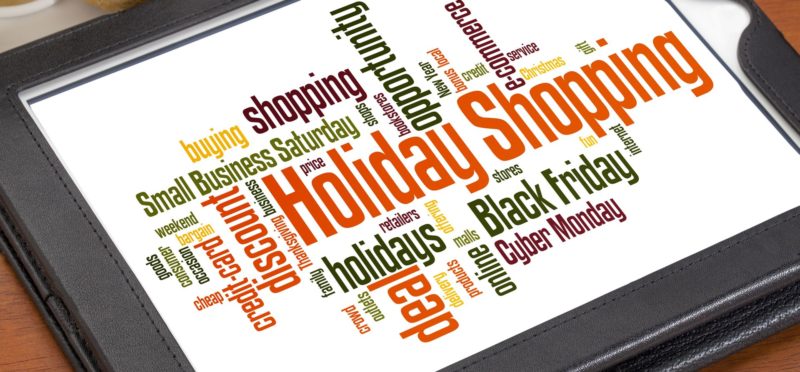Black Friday – Cyber Monday Weekend: Mobile Traffic Soars But Overall Sales Down
Tis’ the season for shopping predictions and consumer surveys. In the week-long run up to Thanksgiving and Black-Cyber weekend there was a veritable tsunami of PR-driven consumer surveys anticipating a shopping boom. Most of these made similar-sounding upbeat projections about overall consumer spending, with a focus on Black Friday. At the highest level of generality the online predictions were directionally accurate. However everything didn’t […]
Tis’ the season for shopping predictions and consumer surveys. In the week-long run up to Thanksgiving and Black-Cyber weekend there was a veritable tsunami of PR-driven consumer surveys anticipating a shopping boom.
Most of these made similar-sounding upbeat projections about overall consumer spending, with a focus on Black Friday. At the highest level of generality the online predictions were directionally accurate. However everything didn’t quite go according to the bullish forecasts.
Coming off the shopping bender, we’ve got another deluge of data with some disagreements. On one side are data from the National Retail Federation (NRF) and ShopperTrak, which measures retail-store visits. They tell a somewhat muted story of a mildly disappointing weekend. On the opposite side are Adobe, IBM and a number of others trumpeting booming online sales.
ShopperTrak speculated that Thanksgiving store hours likely took a bite out of Black Friday store visits. The company estimated that shoppers in the U.S. spent just over $9 billion in stores on Black Friday, representing a 7 percent decline from last year. However, ShopperTrak data do not include online sales.
The NRF, which looks at both in-store and online sales, also reported that the total number of in-store and online shoppers was down from a year ago. The trade group said over the weekend that “55.1 percent of holiday shoppers were or will be in stores and online over Thanksgiving weekend, down from 58.7 percent last year.”
The NRF added that average spending over the weekend was “$380.95, down 6.4 percent from $407.02 last year. Total spending is expected to reach $50.9 billion, down from last year’s estimated $57.4 billion.”
Looking purely at online and ecommerce, Adobe reported that “Thanksgiving Day and Black Friday set new [online] sales records with $1.33 billion and $2.4 billion, respectively.” IBM said that Thanksgiving Day and Black Friday ecommerce was up over 2013 but acknowledged that average order value was down for both days.
IBM further explained that “Black Friday online sales were 63.5 percent higher than Thanksgiving Day. This is a decrease from 2013, however, when it was 70 percent higher, as Thanksgiving online sales continue to eat into Black Friday shopping.”
Both IBM and Adobe highlighted the impressive impact of mobile devices over the long weekend. Adobe said that “smartphones nearly doubled their share of total online sales on both days” and IBM observed that on “Thanksgiving Day mobile traffic accounted for 52.1 percent of all online traffic – the first time mobile devices have outpaced their PC counterparts for online browsing.”
Black Friday mobile traffic was just shy of 50 percent, while “Black Friday mobile sales accounted for 27.9 percent of total online sales, up 28.2 percent over 2013,” according to IBM. Adobe similarly reported that “29 percent of sales on Thanksgiving Day came from mobile devices . . . and 27 percent of sales on Black Friday” were generated by smartphones or tablets.
There was some conflict among the various data sources about the growth of tablet-generated ecommerce. However most sources agreed that iPhones and iPads were responsible for several times more transactions than Android devices.
Over the coming days and weeks we’ll see much more data. However, based on this initial Black-Cyber weekend dump, I would say the following:
- The distinctions between the various shopping days between Thanksgiving and Cyber Monday have broken down for consumers (though not for retailers)
- The notion that Black Friday is a day for in-store sales, while Cyber Monday is for online shopping is totally outdated
- Some people consciously shopped in stores Thursday or online to avoid the Black Friday mania
- Consumers are being selective and using store-visits, PCs and mobile devices to find the best deals
Within the next couple of years we’re likely to see the end of these specific X or Y day distinctions and the emergence of a single long holiday shopping weekend that kicks off on Thanksgiving. This is how consumers are already approaching it.
Opinions expressed in this article are those of the guest author and not necessarily MarTech. Staff authors are listed here.
Related stories
